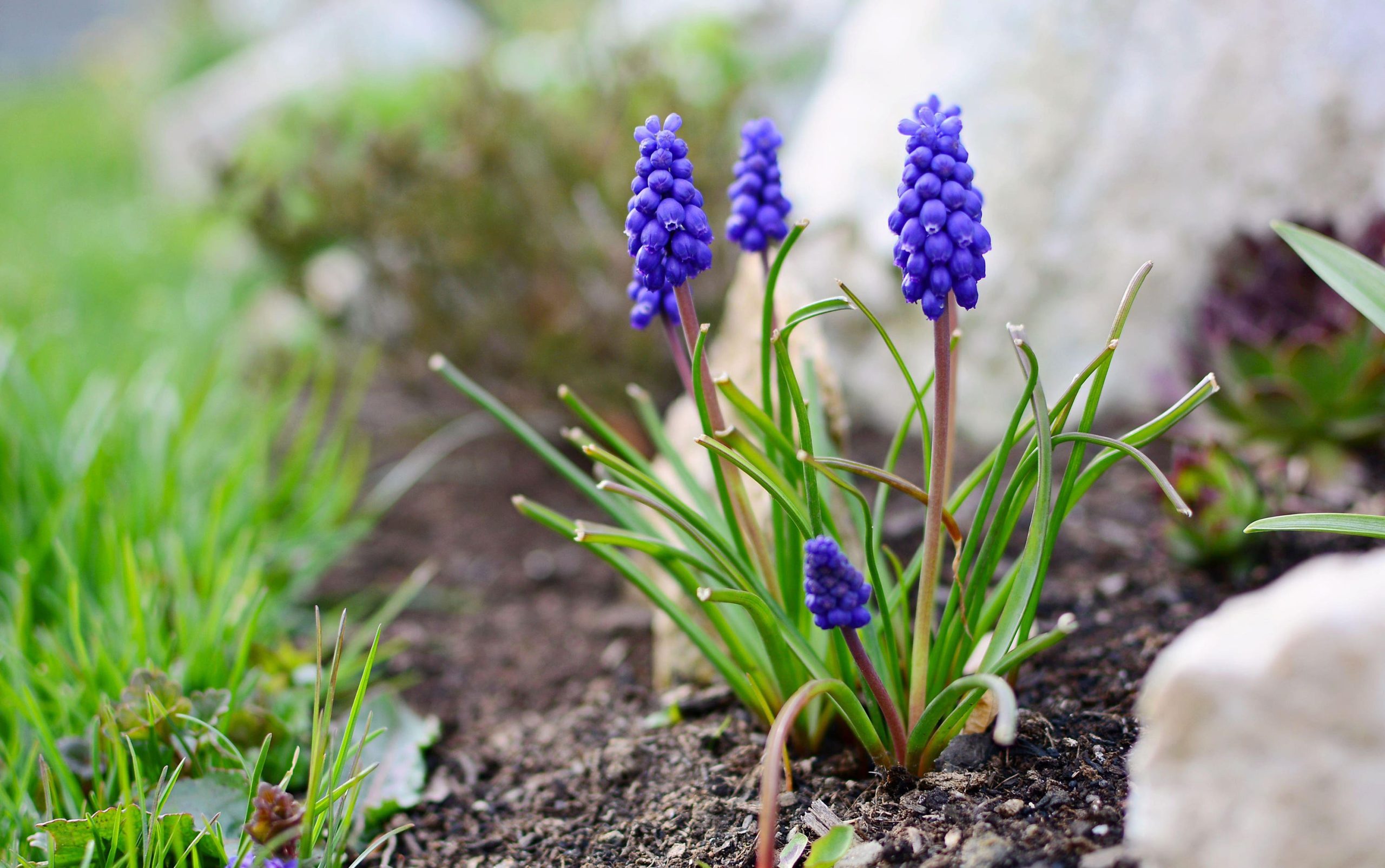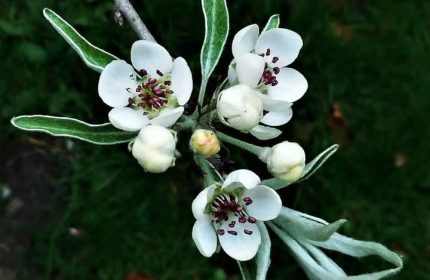Are grape hyacinths good for you?
These little spring bulbs can also boost your health, says an expert
It’s almost time to plant up grape hyacinths, the pint-sized bulbs which offer a mass of blue or white flowers come spring.
Often seen as the regular hyacinth’s pint-sized poor relation (although they are only distantly related, both belonging to the asparagus family) because of their invasive tendencies, grape hyacinths, also known as muscari, actually have some health-inducing elements, says a bulb expert.

Grape hyacinths
Their flowers look like blue bunches of grapes and are brilliant for carpeting the ground with blooms, naturalising in borders, and also look terrific in containers, rockeries and the gaps at the front of borders, providing a glorious spring display with their pretty blooms in shades of blue and white.
And their perfumed oils can be used for boosting the immune system, says Jonathan Bracewell, bulb and growing expert from J Parker’s.
As gardeners prepare to plant grape hyacinths in autumn to bloom in spring, he says these colourful, fragrant plants offer some surprising wellness benefits.
Body-boosting vitamin C

Bracewell says that the grape hyacinth offers high levels of vitamin C.
While the flowers are edible, they can be bitter unless cooked, he says. However, across the Mediterranean, grape hyacinth bulbs can be a delicacy and may be pickled or cooked to provide a sharp flavour, similar to spring onions. This is known in Italy as lampascioni and is considered a delicacy.
Bracewell explains: “Grape hyacinths are grown across Greece, Turkey and Bulgaria and when cooked correctly are an interesting and complex flavour. Moreover, grape hyacinth flowers are rich in antioxidants and contain high levels of vitamin C, which makes them nutritious and can help with different ailments.”
Do not, however, eat any part of the larger, regular hyacinths (Hyacinthus), as they are toxic and can cause stomach upsets.
Fragrant shampoo and conditioner

Grape hyacinth can be a popular fragrance choice and is used in perfumes, haircare and wellness products for its feel-good floral scent, says Bracewell.
“The grassy freshness of grape hyacinths makes it a feel-good fragrance for perfumes which gives a springtime freshness. Many shampoos and conditioners contain hyacinth, which is synonymous with the fresh, floral scent of springtime. It is commonly used in the perfume trade.”
Cocktail syrup
“Another way to use grape hyacinths is to create a hyacinth syrup; this can be delicious when paired with lemon juice and sparkling water for a garden mocktail while having the vibrant colours of a cocktail,” adds Bracewell.
Muscari flowers also contain vitamin A which is known to provide immune boosting properties and support normal vision and skin health, he adds.
Take care when handling other varieties
While grape hyacinths are generally safe to handle, wear gardening gloves if you are planting the larger regular hyacinth bulbs (hyacinthus), as they can cause a skin rash or irritation, a reaction to the high levels of the mineral calcium oxalate found on the bulbs.

Wear gloves when handling larger varieties of hyacinth
If you experience a reaction, wash the affected area with warm soapy water; you can also apply topical antihistamine cream to relieve the itchiness.
It’s also essential to note hyacinthus bulbs – the larger flowered types – can be toxic to dogs and children, so ensure they are planted deeply enough in the soil or placed out of the way of dogs and children when storing the bulbs.
So, how great are the health properties of grape hyacinths?
Guy Barter, chief horticultural advisor at the RHS, says: “They do a lot of good [for mental health] on account of them being beautiful and scented.”
But he warns: “We recommend not to eat anything that isn’t sold as a food crop. If it’s not licenced and approved, we are generally very guarded.”
How to plant grape hyacinths
1. Plant bulbs in autumn to ensure they flourish in spring.
2. For best results, plant the bulbs in fertile soil that drains well, ideally positioned in an area where they will be in full sunshine. Plant the bulbs around 10cm deep. When growing a collection of muscari, ensure each bulb is 5-10cm apart to achieve the best display. Grape hyacinths work really well in containers and patio pots to provide bursts of colour, but they can also be planted in flower beds.
3. Don’t worry about watering them daily, just ensure the soil feels moist but not saturated.

Grape hyacinths
4. Once the flowers have bloomed, you can cut off the flower stalk at the base – if the soil is well-draining, they can be left for the following year. If not, lift the bulbs out, brush off the soil and store them in a cool, dry place before replanting again in the autumn.
The Press Association
Latest posts by The Press Association (see all)
- World Parkinson’s Day – 10 early signs of the disease - April 5, 2025
- World Health Day: 8 easy ways to boost your health in just 10 minutes - April 5, 2025
- International Carrot Day: 9 weird and wonderful things you didn’t know about the orange vegetable - April 4, 2025
- Best places to see bluebells this spring - April 2, 2025
- Does sunscreen expire? Everything you need to know about SPFs - April 2, 2025




















